
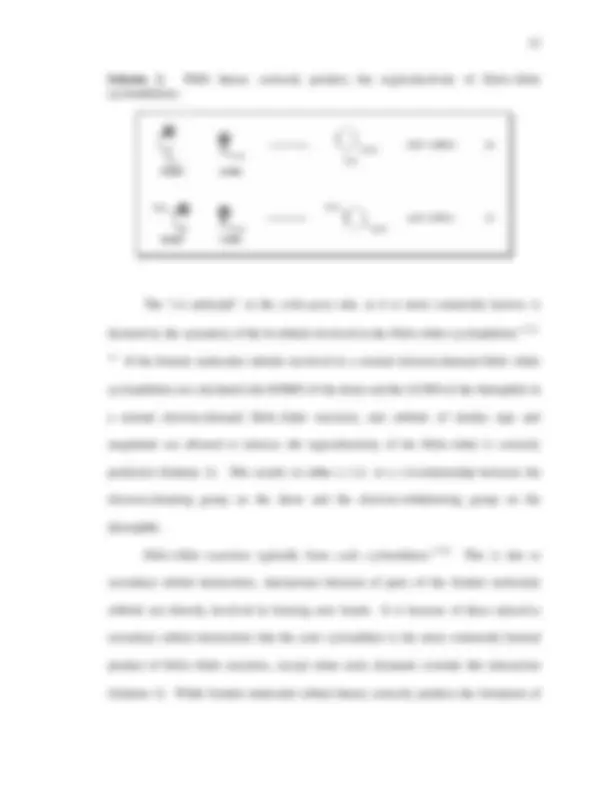
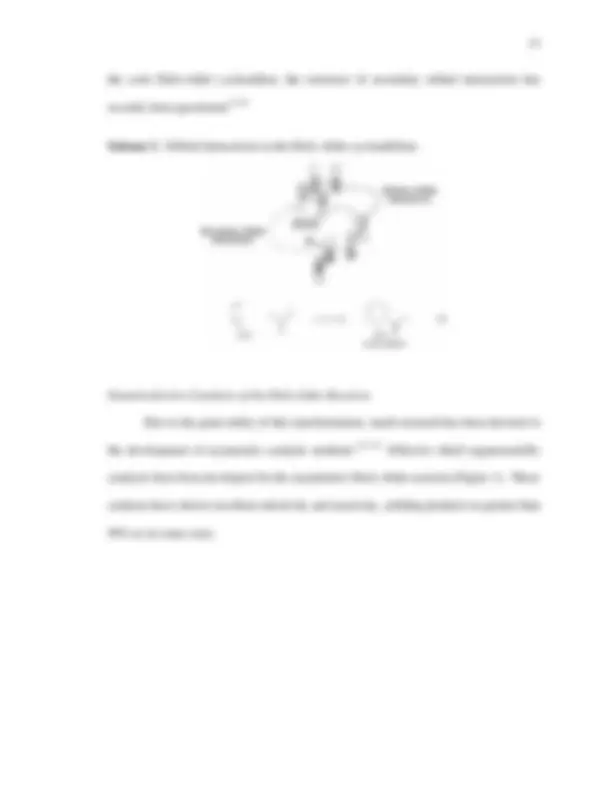
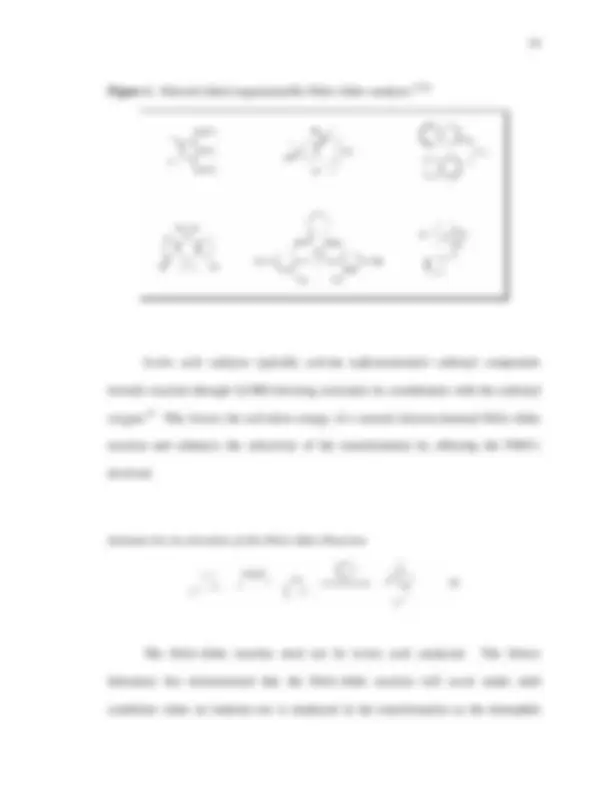

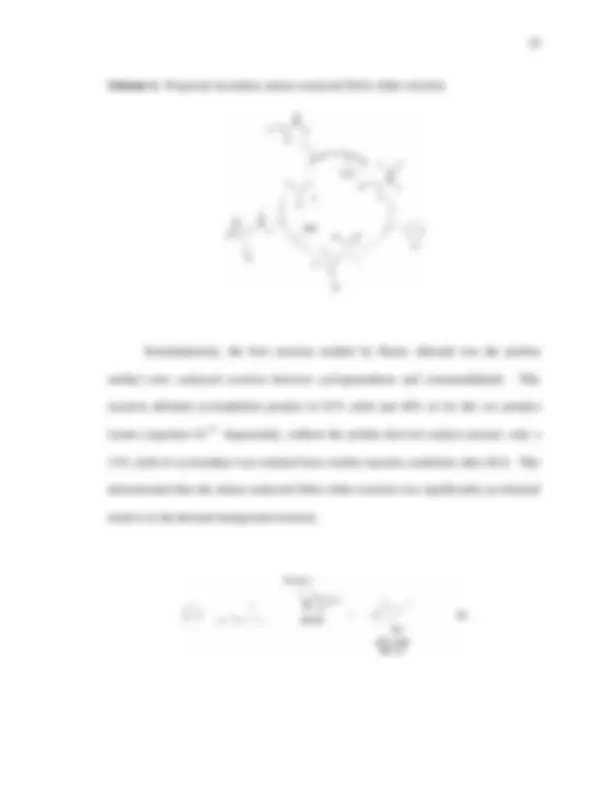
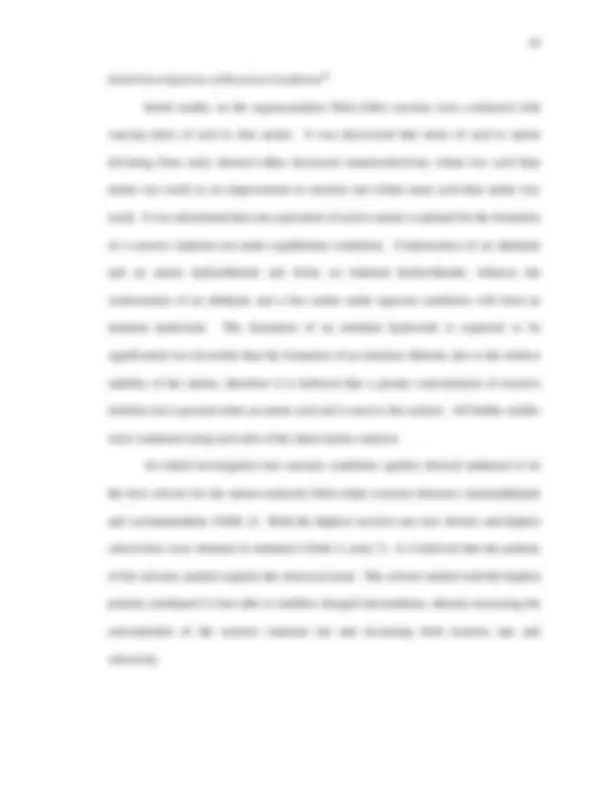
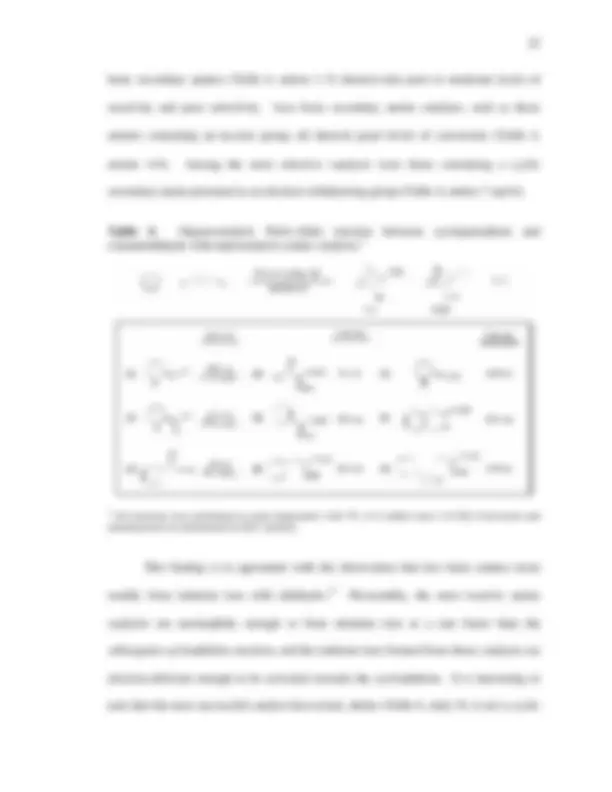
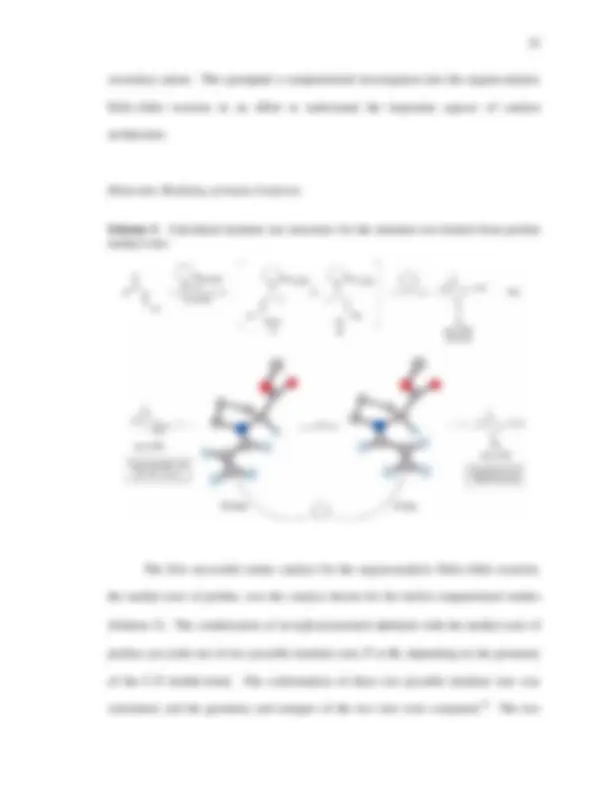
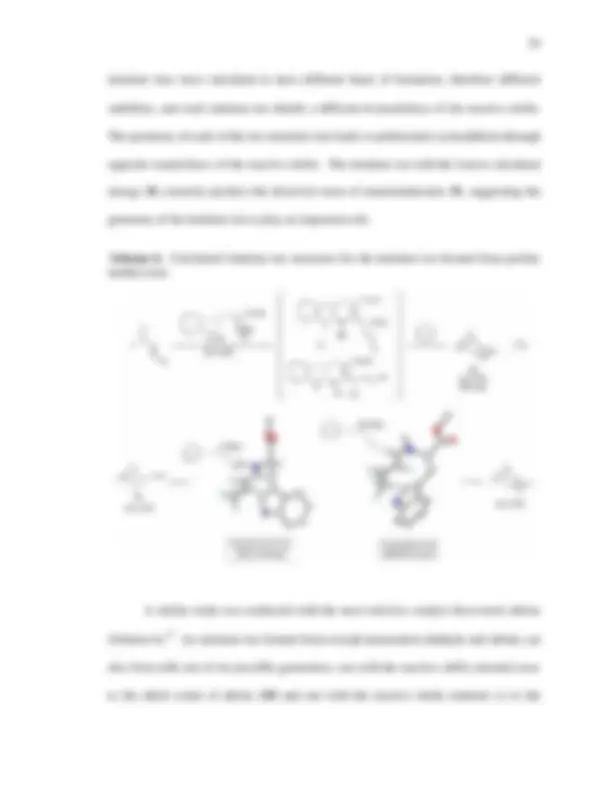
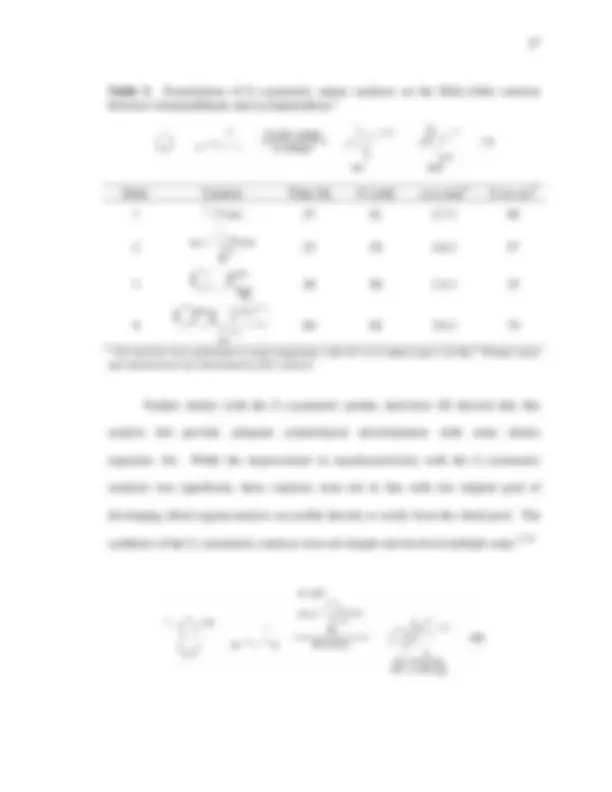
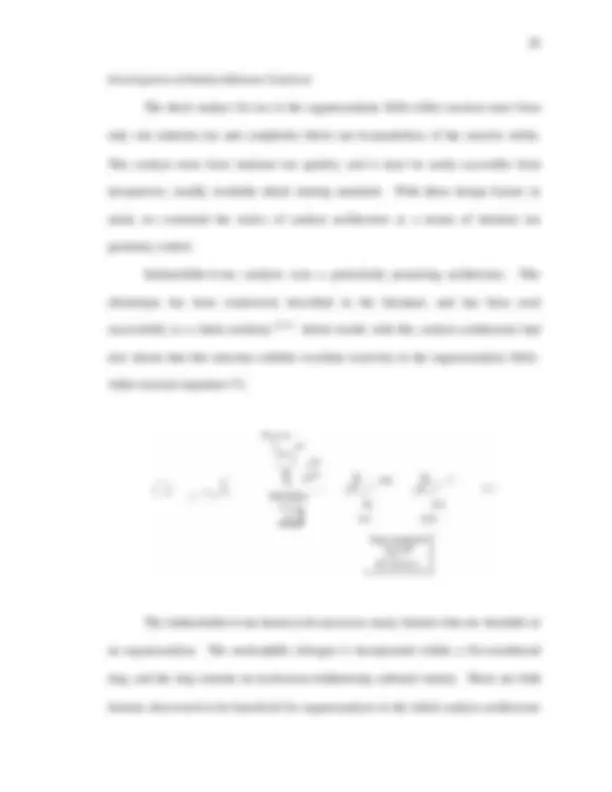
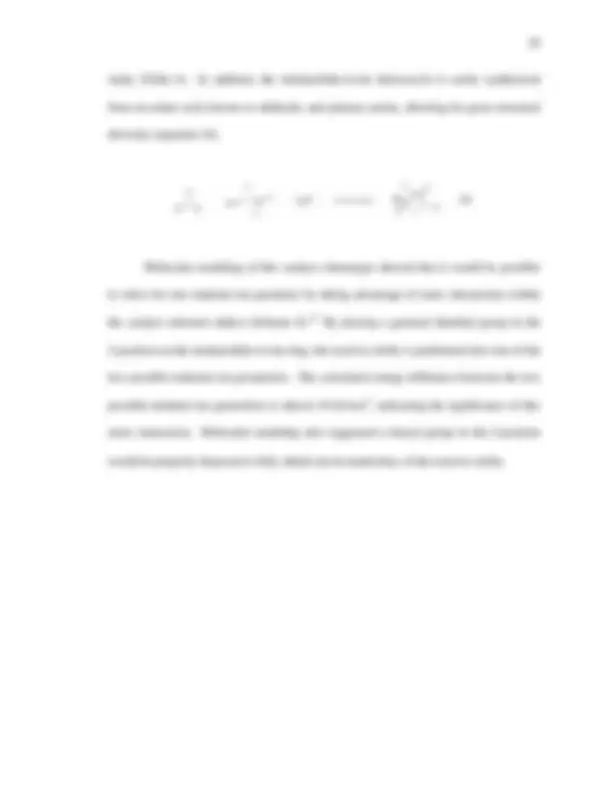
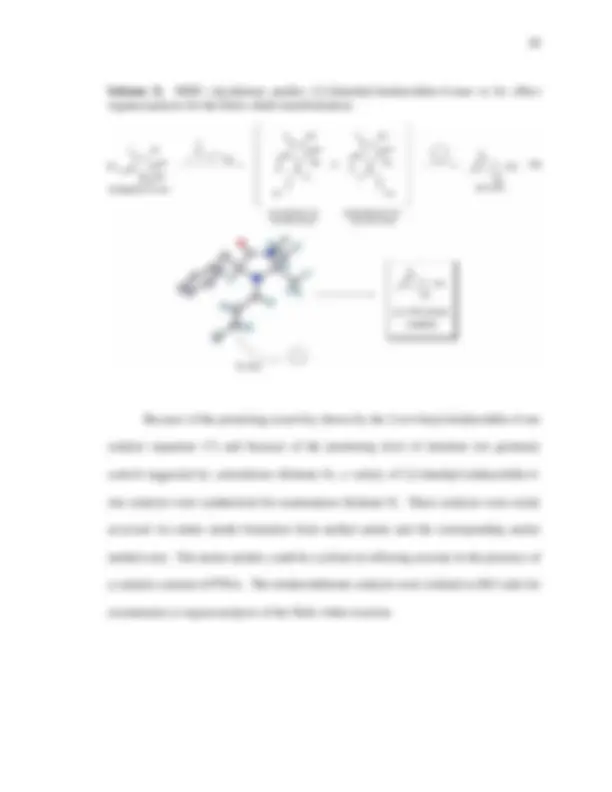
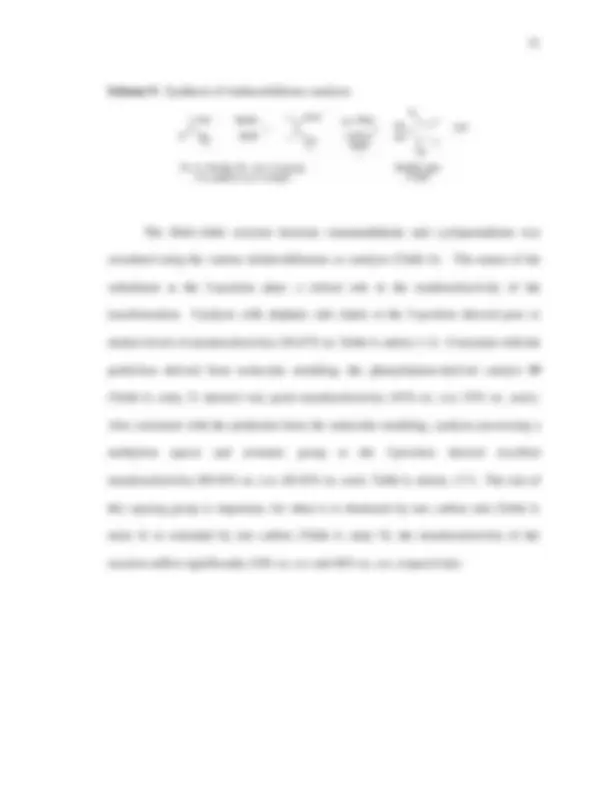
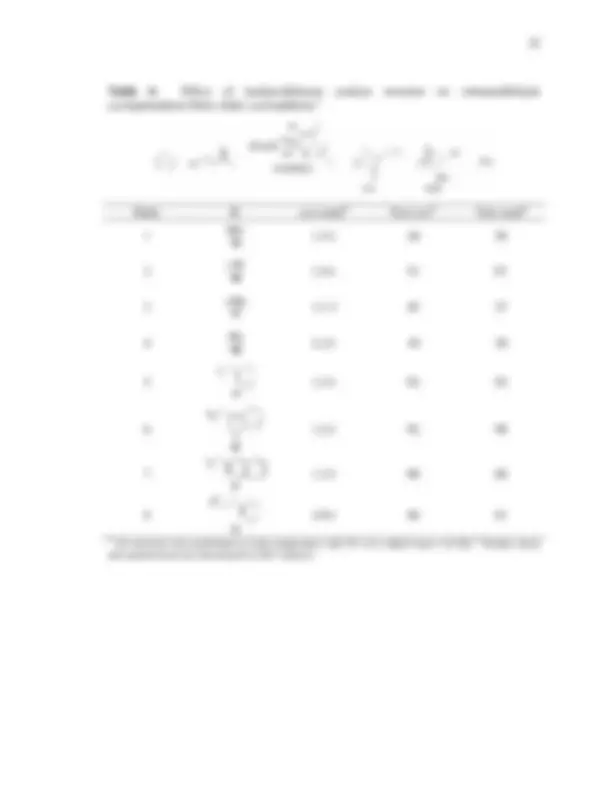
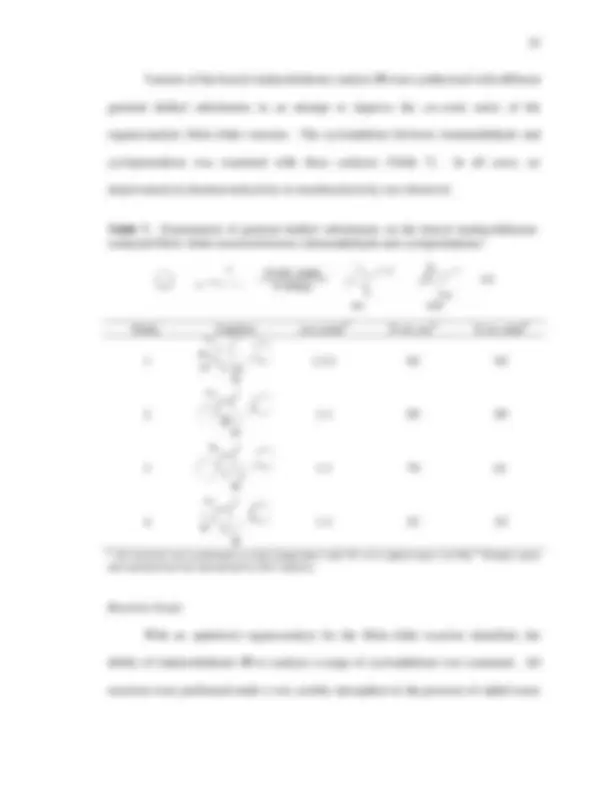
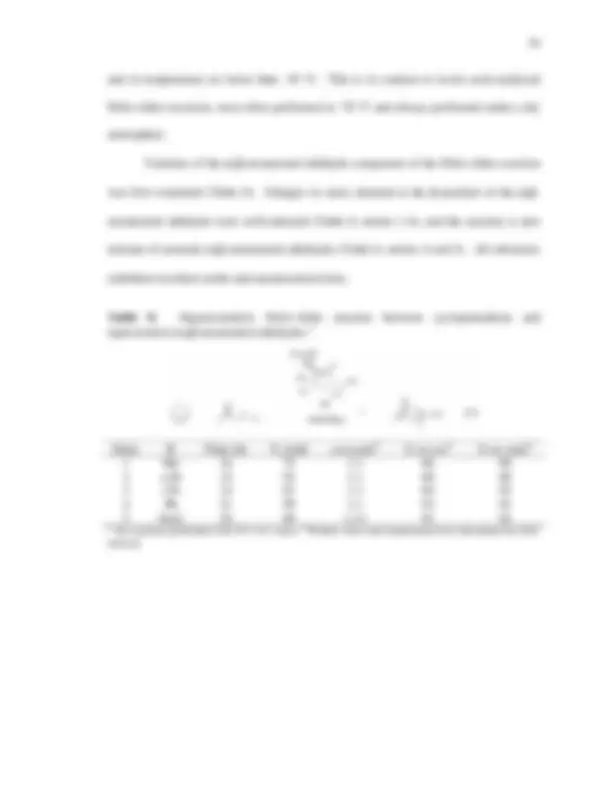
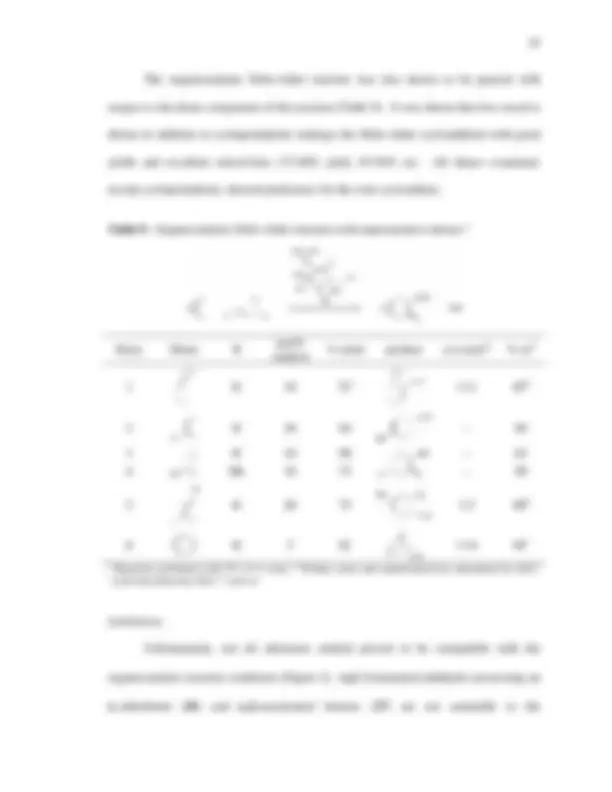
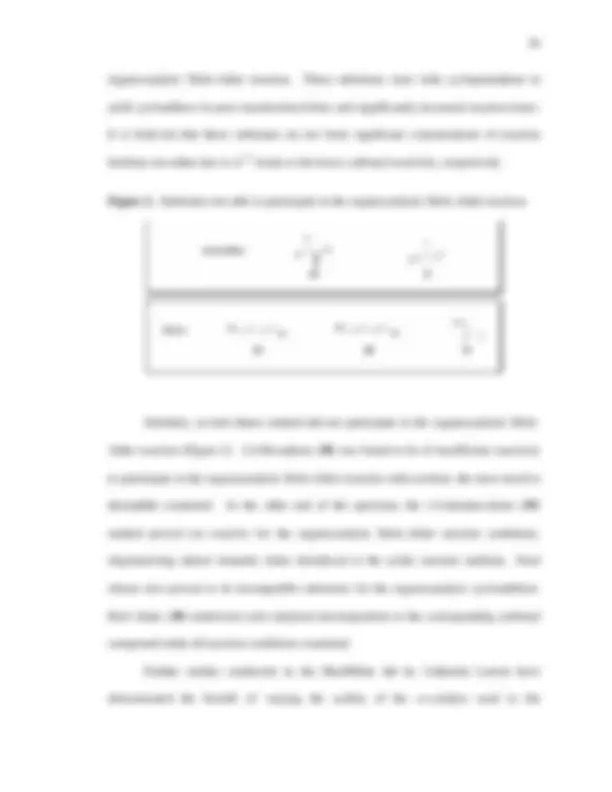
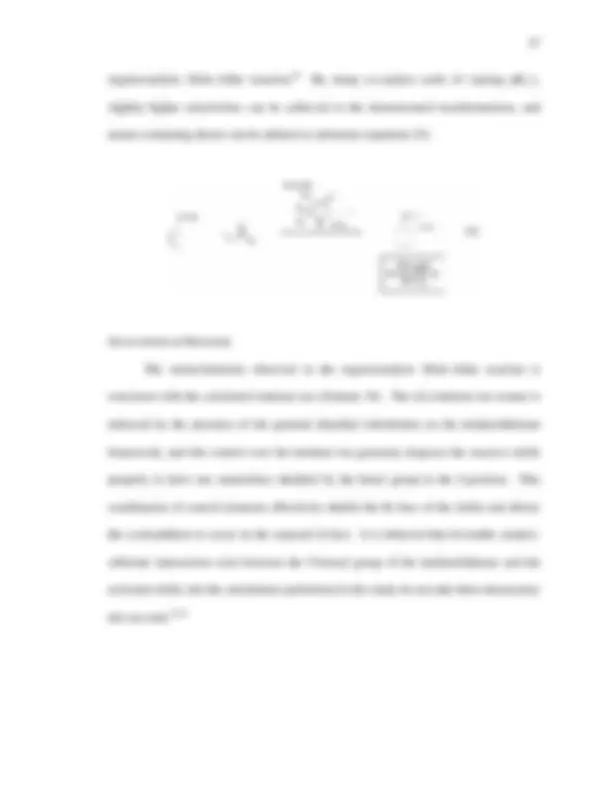
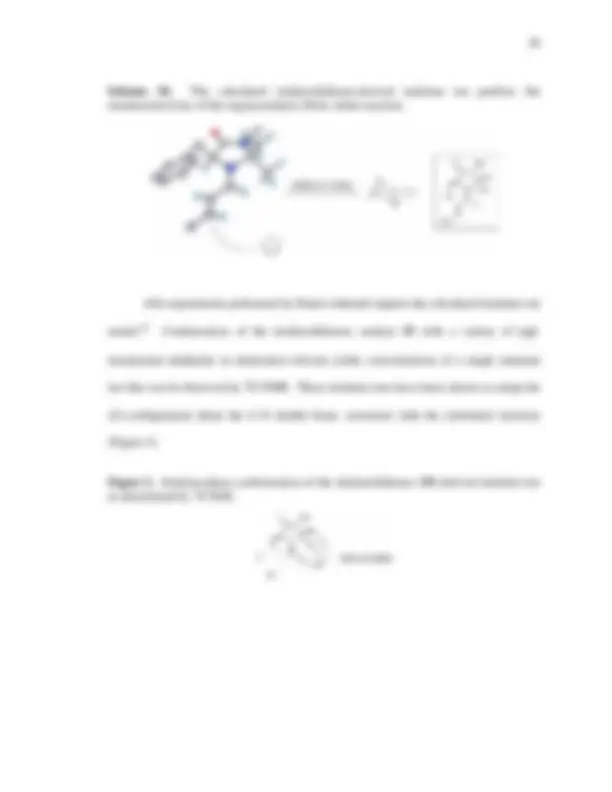

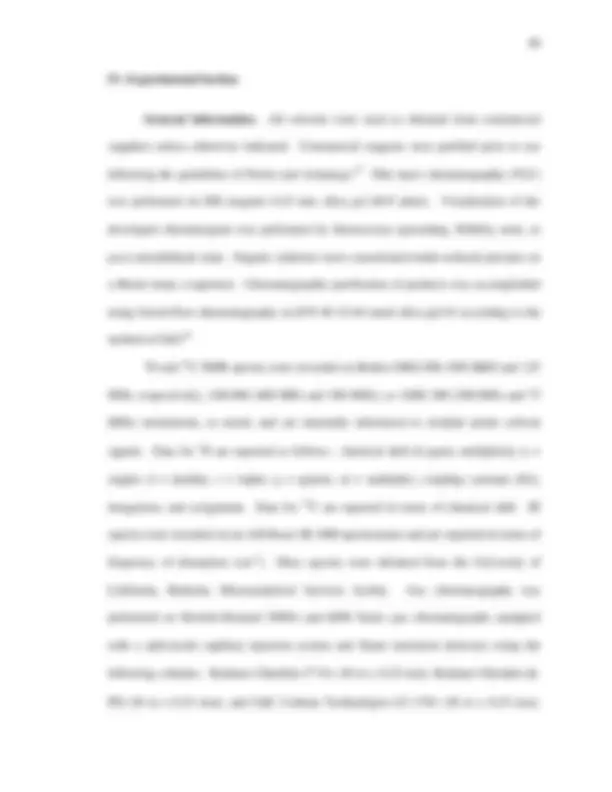
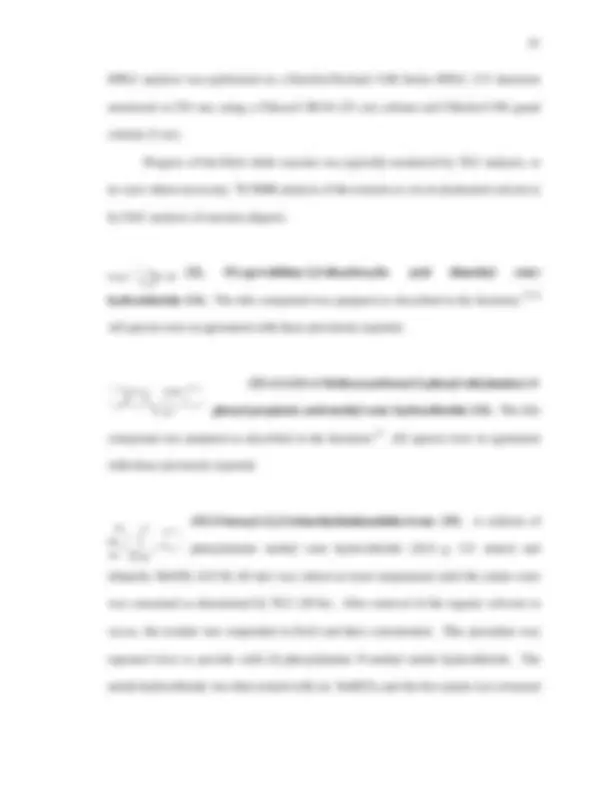
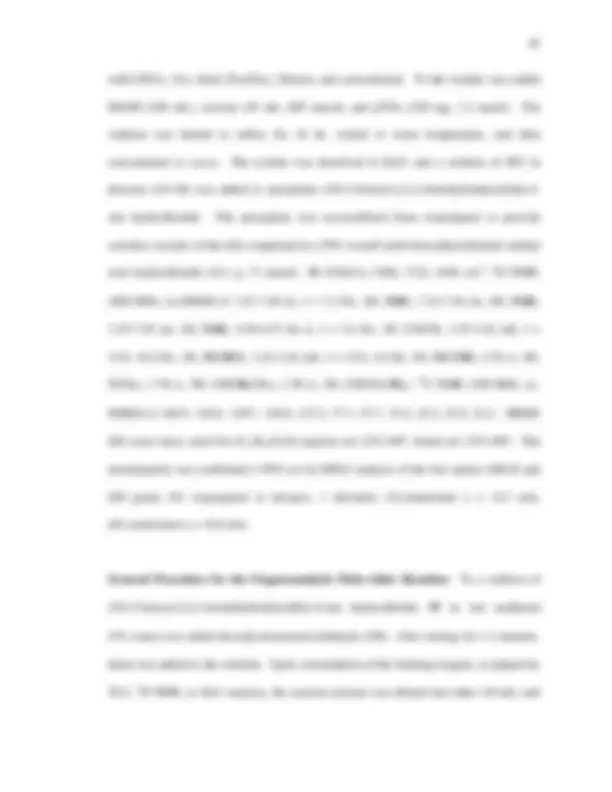
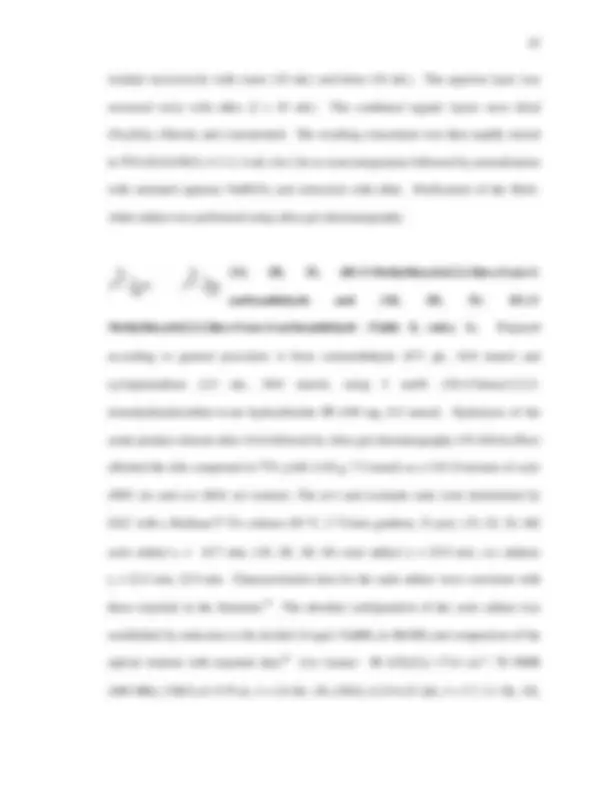
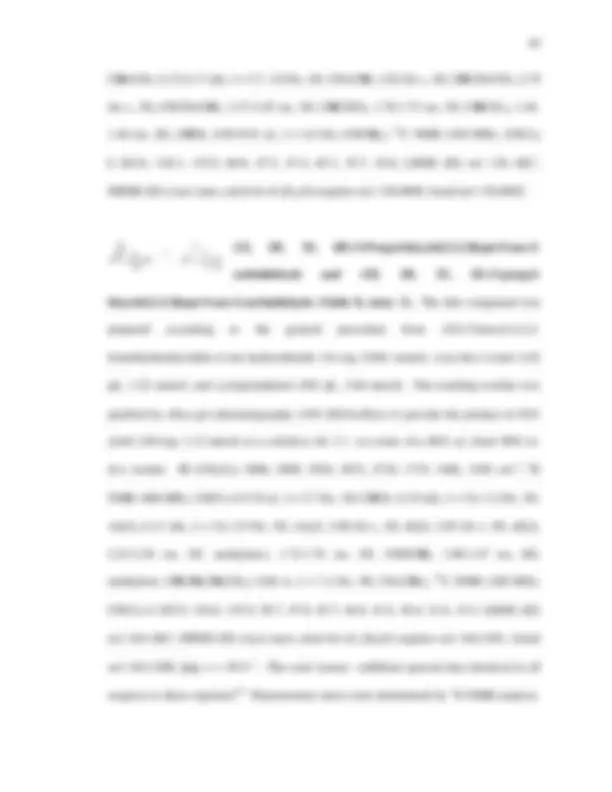

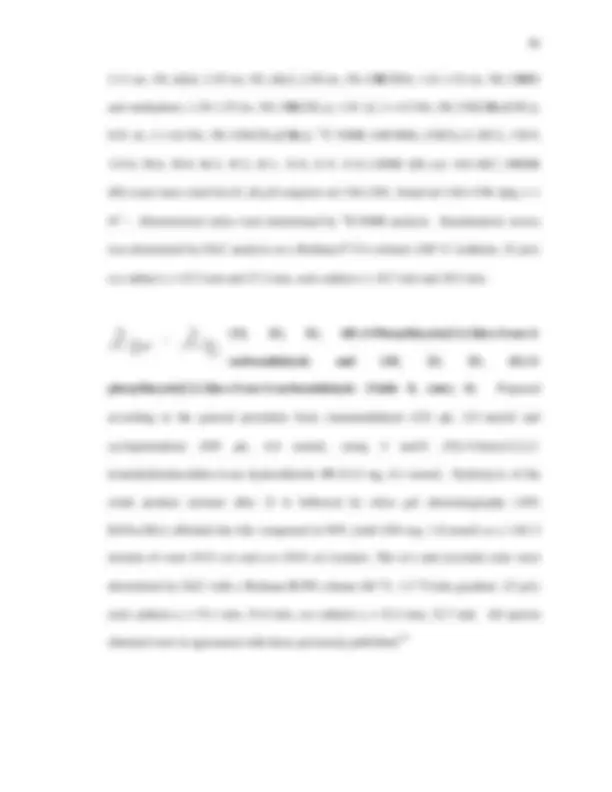

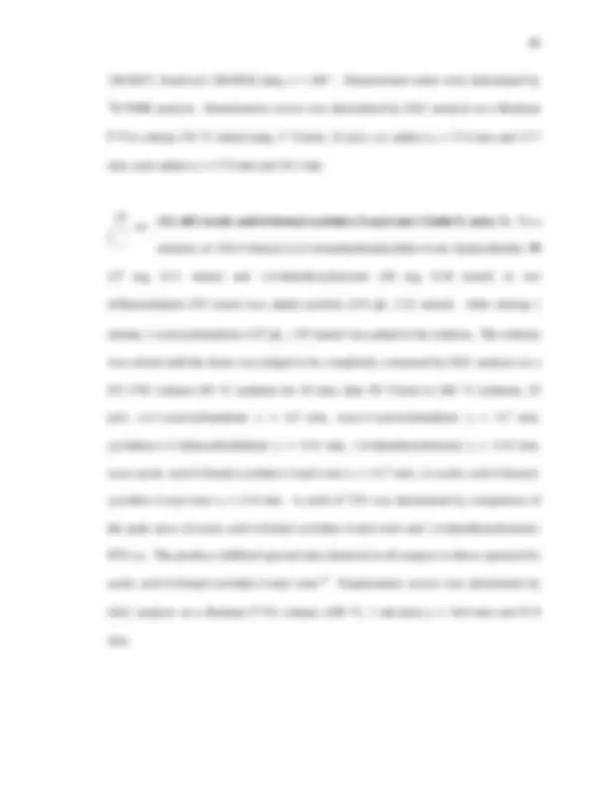
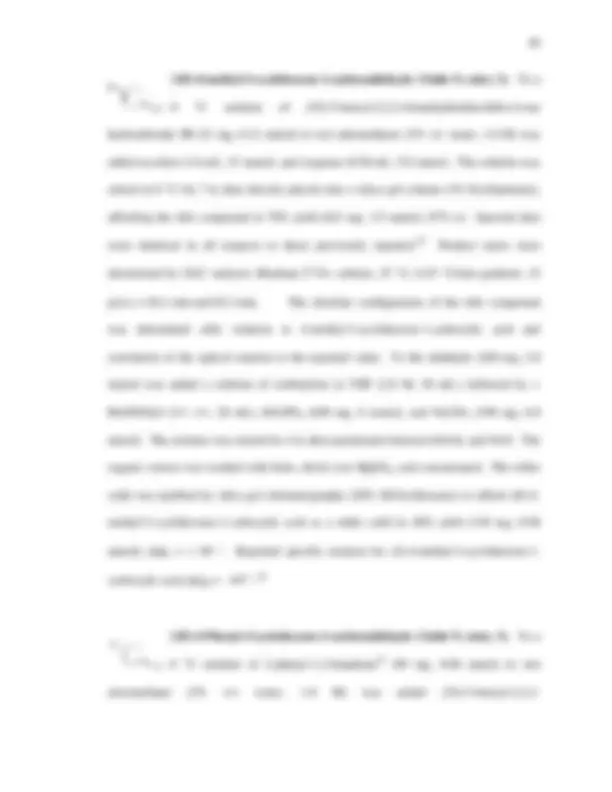
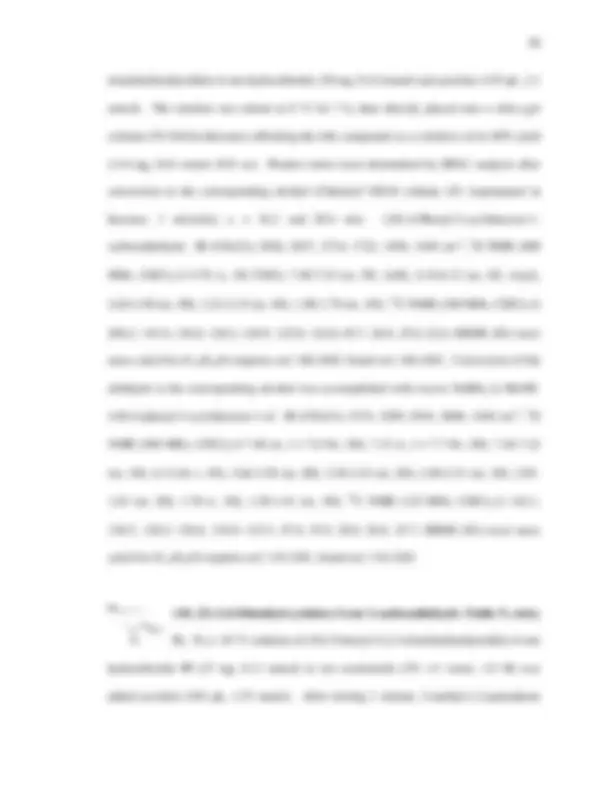
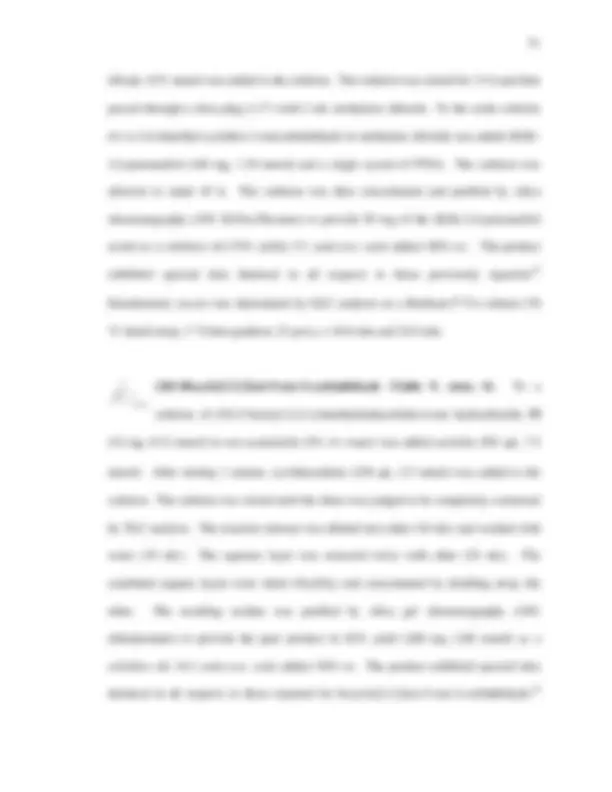
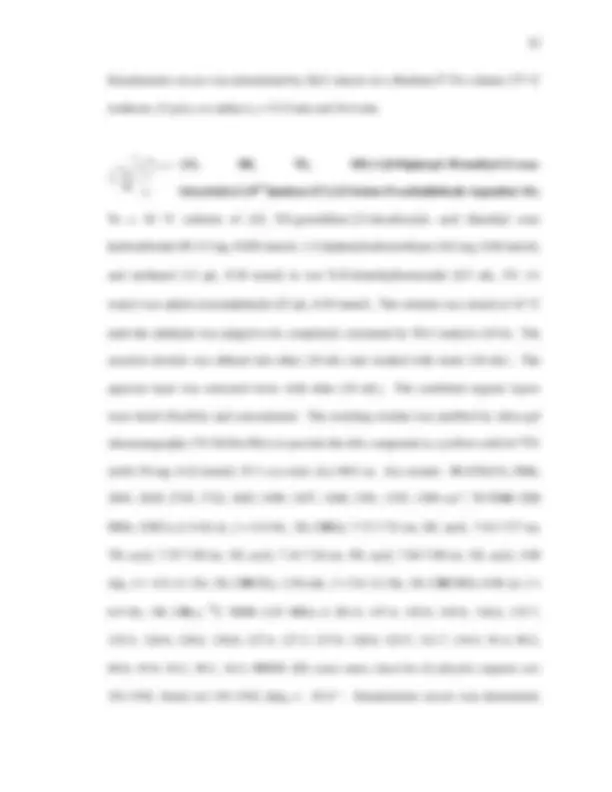

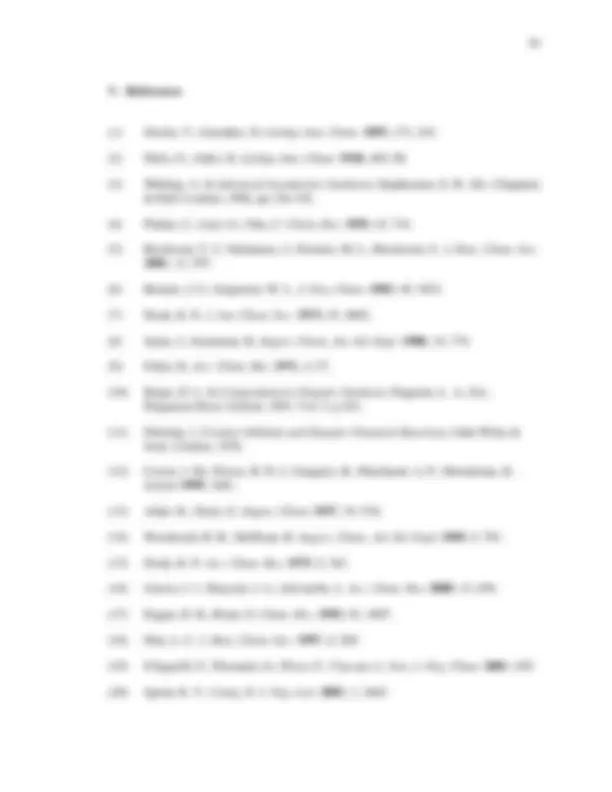
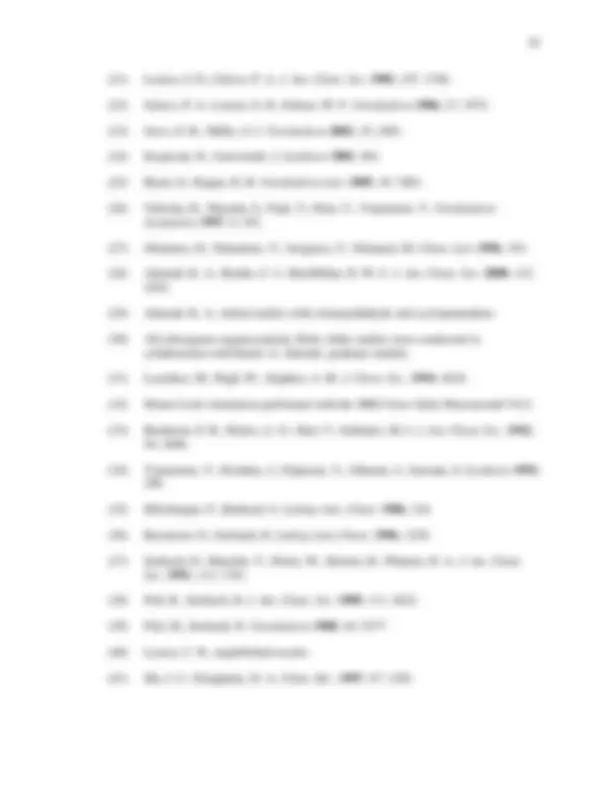
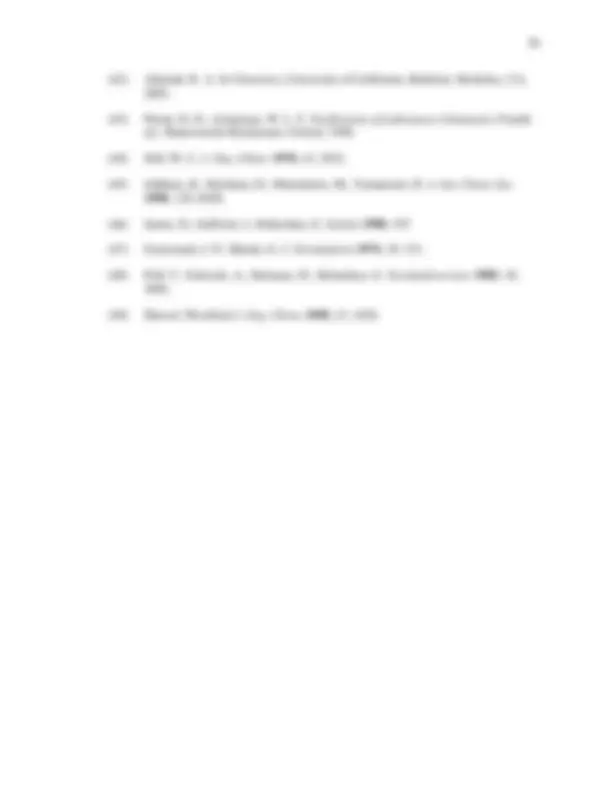


Study with the several resources on Docsity

Earn points by helping other students or get them with a premium plan


Prepare for your exams
Study with the several resources on Docsity

Earn points to download
Earn points by helping other students or get them with a premium plan
Community
Ask the community for help and clear up your study doubts
Discover the best universities in your country according to Docsity users
Free resources
Download our free guides on studying techniques, anxiety management strategies, and thesis advice from Docsity tutors
An in-depth exploration of the Diels-Alder reaction, a significant reaction in organic chemistry. Discover its history, classification, and mechanisms, including normal, inverse, and neutral electron-demand reactions. Learn about the role of chiral auxiliaries and organocatalysis in this transformation. experimental data and characterization of various Diels-Alder adducts.
Typology: Study notes
1 / 47

This page cannot be seen from the preview
Don't miss anything!








































I. Introduction
The Diels-Alder Reaction Examples of the [2+4]-cycloaddition known as the Diels-Alder reaction can be found in the literature as early as the end of the 19th^ century.^1 The formal elucidation of this reaction did not occur until early in the 20th^ century when Otto Diels and Kurt Alder correctly deduced the product of the thermal reaction of p -benzoquinone and cyclopentadiene (equation 1).^2 This discovery was of such significance to the chemical community that Diels and Alder were awarded the Nobel Prize in 1950.
The Diels-Alder reaction is one of the most frequently used transformations in organic chemistry because of its highly stereoselective nature. The Diels-Alder reaction can regio- and diastereoselectively create six-membered and polycyclic ring systems, and it has the potential to set four contiguous stereogenic centers.3-5^ It has even been referred to as “the single most important reaction in the synthetic chemist’s tool box.”^5
Diels-Alder reactions can be classified and their outcomes predicted based on the HOMO and LUMO involved in the transformation.6-9^ Normal electron-demand Diels- Alder reactions are controlled by the interaction of the HOMOdiene and the LUMOdienophile; inverse electron-demand Diels-Alder reactions are controlled by the interaction of the LUMOdiene and the HOMOdienophile; neutral Diels-Alder reactions have no one dominant molecular orbital interaction (Scheme 1). Historically, the normal electron-demand Diels-Alder reaction has been the most studied and utilized.^10
Scheme 1. Classification of Diels-Alder reactions based on the energy of the frontier molecular orbitals involved.
It is the electronics of the Diels-Alder cycloaddition that dictate the nature of stereocontrol in the reaction and lead to the high selectivities observed in the transformation.11,12^ Two general principles govern the selectivity of Diels-Alder reactions, the “ cis principle” (as coined by Alder),^13 and secondary orbital interactions.
the endo Diels-Alder cycloadduct, the existence of secondary orbital interactions has recently been questioned.12,
Scheme 3. Orbital interactions in the Diels-Alder cycloaddition.
Enantioselective Catalysis of the Diels-Alder Reaction Due to the great utility of this transformation, much research has been devoted to the development of asymmetric catalytic methods.4,17-19^ Effective chrial organometallic catalysts have been developed for the asymmetric Diels-Alder reaction (Figure 1). These catalysts have shown excellent selectivity and reactivity, yielding products in greater than 99% ee in some cases.
Figure 1. Selected chiral organometallic Diels-Alder catalysts.18,
Lewis acid catalysts typically activate α,β-unsaturated carbonyl compounds towards reaction through LUMO-lowering activation by coordination with the carbonyl oxygen.^18 This lowers the activation energy of a normal electron-demand Diels-Alder reaction and enhances the selectivity of the transformation by affecting the FMO’s involved.
Iminium Ion Acceleration of the Diels-Alder Reaction
The Diels-Alder reaction need not be Lewis acid catalyzed. The Grieco laboratory has demonstrated that the Diels-Alder reaction will occur under mild conditions when an iminium ion is employed in the transformation as the dienophile
Alder cycloaddition of 3-hydroxy-2-pyrone and N -methylmaleimide has also been effectively catalyzed by cinchona alkaloids.^27 Cinchonine proved to be the most effective catalyst, producing the cycloadduct in 95% yield and 71% ee (equation 7). These transformations are believed to be accelerated by the formation of the enolate of the diene. Asymmetry is believed to result from a tight ion pairing between the diene enolate and the protonated chiral base catalyst.
Despite the many examples of organocatalytic Diels-Alder reactions in the literature (catalytic antibodies, cinchona alkaloids, etc.), there has not been a general organocatalytic Diels-Alder strategy reported.
II. Results and Discussion^28
Initial Investigations We chose the Diels-Alder reaction as a platform for the development of a general organocatalytic strategy, attempting to discover an organocatalyst either directly or easily accessible from the chiral pool, and we hoped that the reaction would provide a good starting point for the extension of organocatalytic methodology to other organic transformations like dipolar cycloadditions and conjugate additions. We hypothesized that a secondary amine should be able to catalyze the same reactions as a Lewis acid through a LUMO-lowering equilibrium with an α,β-unsaturated aldehyde (see
Chapter 1). We believed that the iminium ion 3 generated from an α,β-unsaturated aldehyde 1 and a chiral secondary amine 2 would be activated towards cycloaddition with an appropriate diene 4 (Scheme 4). The Diels-Alder reaction with the activated iminium ion 3 would generate an iminium ion cycloadduct 5 which, in the presence of water, would hydrolyze to yield the enantioenriched product 6 and regenerate the chiral secondary amine catalyst 2.
Initial Investigations of Reaction Conditions^30 Initial studies on the organocatalytic Diels-Alder reaction were conducted with varying ratios of acid to free amine. It was discovered that ratios of acid to amine deviating from unity showed either decreased enantioselectivity (when less acid than amine was used) or no improvement in reaction rate (when more acid than amine was used). It was determined that one equivalent of acid to amine is optimal for the formation of a reactive iminium ion under equilibrium conditions. Condensation of an aldehyde and an amine hydrochloride salt forms an iminium hydrochloride, whereas the condensation of an aldehyde and a free amine under aqueous conditions will form an iminium hydroxide. The formation of an iminium hydroxide is expected to be significantly less favorable than the formation of an iminium chloride, due to the relative stability of the anions, therefore it is believed that a greater concentration of reactive iminium ion is present when an amine acid salt is used as the catalyst. All further studies were conducted using acid salts of the chiral amine catalysts. An initial investigation into reaction conditions quickly showed methanol to be the best solvent for the amine-catalyzed Diels-Alder reaction between cinnamaldehyde and cyclopentadiene (Table 2). Both the highest reaction rate (not shown) and highest selectivities were obtained in methanol (Table 2, entry 7). It is believed that the polarity of the solvents studied explains the observed trend. The solvent studied with the highest polarity (methanol) is best able to stabilize charged intermediates, thereby increasing the concentration of the reactive iminium ion and increasing both reaction rate and selectivity.
Table 2. Effect of solvent on the proline methyl ester catalyzed Diels-Alder cycloaddition between cyclopentadiene and cinnamaldehyde.a
Entry Solvent ETN^ exo:endo b^ % ee ( exo )b 1 THF 0.207 2.3:1 18 2 CH 2 Cl 2 0.309 3.3:1 28 (^34) DMSODMF 0.4040.444 2.4:12.5:1 (^2522) 5 CH 3 CN 0.460 2.6:1 39 6 CH 3 NO 2 0.481 2.7:1 36 a (^) All reactions were performed at room temperature (1.0 M);^7 MeOH^ 0.762^ b (^) Product ratios and enantioselectivity2.4:1^48 determined by GLC analysis.
Because of the strong dependence on the polarity of the reaction medium shown by the organocatalytic Diels-Alder reaction, the effect of water on the reaction was next studied. Since higher polarity solvents produced more favorable results, it was hypothesized that the addition of water to the reaction medium would accelerate the reaction by increasing the solvent’s polarity. The best results were obtained when 5% (v/v) water was incorporated into the reaction medium (Table 3, entry 2). As can be seen in Table 3, no water retards the reaction rate and decreases the selectivity, and excess water also impedes reactivity and selectivity. It is believed that a small amount of water facilitates the formation of the reactive iminium ion by increasing the polarity of the reaction medium, while a large amount of water retards the reaction by inhibiting the formation of the iminium ion through hydrolysis.
basic secondary amines (Table 4, entries 1-3) showed only poor to moderate levels of reactivity and poor selectivity. Less basic secondary amine catalysts, such as those amines containing an α-ester group, all showed good levels of conversion (Table 4, entries 4-9). Among the most selective catalysts were those containing a cyclic secondary amine proximal to an electron withdrawing group (Table 4, entries 7 and 8).
Table 4. Organocatalytic Diels-Alder reaction between cyclopentadiene and cinnamaldehyde with representative amine catalysts.a
a (^) All reactions were performed at room temperature with 5% (v/v) added water (1.0 M); Conversion and enantioselectivity determined by GLC analysis.
This finding is in agreement with the observation that less basic amines more readily form iminium ions with aldehydes.^31 Presumably, the most reactive amine catalysts are nucleophilic enough to form iminium ions at a rate faster than the subsequent cycloaddition reaction, and the iminium ions formed from those catalysts are electron-deficient enough to be activated towards the cycloaddition. It is interesting to note that the most successful catalyst discovered, abrine (Table 4, entry 9), is not a cyclic
secondary amine. This prompted a computational investigation into the organocatalytic Diels-Alder reaction in an effort to understand the important aspects of catalyst architecture.
Molecular Modeling of Amine Catalysts
Scheme 5. Calculated iminium ion structures for the iminium ion formed from proline methyl ester.
The first successful amine catalyst for the organocatalytic Diels-Alder reaction, the methyl ester of proline, was the catalyst chosen for the initial computational studies (Scheme 5). The condensation of an α,β-unsaturated aldehyde with the methyl ester of proline can yield one of two possible iminium ions ( 7 or 8 ), depending on the geometry of the C-N double-bond. The conformation of these two possible iminium ions was calculated, and the geometry and energies of the two ions were compared.^32 The two
chiral center of abrine ( 11 ). These two iminium ions are also calculated to have different heats of formation, and each iminium ion shields a different π-enantioface of the reactive olefin. This leads to the formation of a different product enantiomer from each reactive iminium ion, and the iminium ion with the lowest calculated energy ( 11 ) correctly predicts the observed sense of enantioinduction ( 12 ). These two calculations suggest that the geometry of the reactive iminium ion is the controlling factor in determining the sense of enantioinduction observed in the organocatalytic Diels-Alder reaction. The close energy of the iminium ions calculated in each case (about 2 and 3 kJ·mol-1, respectively) suggests that both iminium ion geometries are intermediates in the cycloaddition. In an effort to improve the selectivity of the process, investigations into the control of iminium ion geometry were undertaken. An obvious method of iminium ion geometry control is through symmetry. If a C 2 -symmetric secondary amine were employed as the catalyst, there could be only one possible iminium ion, since the two geometric isomers are degenerate. Macromodel calculations supported this hypothesis, and suggested the same sense of enantioinduction as observed with the proline methyl ester catalyst (Scheme 7).^32
Scheme 7. Calculated iminium ion geometry for the iminium ion formed from a C 2 - symmteric catalyst.
Investigation of C 2 -Symmetric Catalysts C 2 -Symmetric catalysts were synthesized to test the importance of iminium ion geometry control as an important element of enantiocontrol. A C 2 -symmteric derivative of proline methyl ester 13 was synthesized according to literature procedures,33,34^ and a C 2 -symmetric derivative of phenylalanine methyl ester 14 was also synthesized.^35 These catalysts did show an improvement in enantioselectivity relative to their parent structures (Table 5). The phenylalanine-derived catalyst showed a significant improvement in selectivity, but at the cost of an extremely long reaction time (Table 5, entry 4).
Investigation of Imidazolidinone Catalysts The ideal catalyst for use in the organocatalytic Diels-Alder reaction must form only one iminium ion and completely block one π-enantioface of the reactive olefin. This catalyst must form iminium ion quickly, and it must be easily accessible from inexpensive, readily available chiral starting materials. With these design factors in mind, we examined the sterics of catalyst architecture as a means of iminium ion geometry control. Imidazolidin-4-one catalysts were a particularly promising architecture. This chemotype has been extensively described in the literature, and has been used successfully as a chiral auxiliary.36-39^ Initial results with this catalyst architecture had also shown that this structure exhibits excellent reactivity in the organocatalytic Diels- Alder reaction (equation 17).
The imidazolidin-4-one heterocycle possesses many features that are desirable in an organocatalyst. The nucleophilic nitrogen is incorporated within a five-membered ring, and the ring contains an α-electron-withdrawing carbonyl moiety. These are both features discovered to be beneficial for organocatalysts in the initial catalyst architecture
study (Table 4). In addition, the imidazolidin-4-one heterocycle is easily synthesized from an amino acid, ketone or aldehyde, and primary amine, allowing for great structural diversity (equation 18).
Molecular modeling of this catalyst chemotype showed that it would be possible to select for one iminium ion geometry by taking advantage of steric interactions within the catalyst substrate adduct (Scheme 8).^32 By placing a geminal dimethyl group in the 2-position on the imidazolidin-4-one ring, the reactive olefin is partitioned into one of the two possible iminium ion geometries. The calculated energy difference between the two possible iminium ion geometries is almost 10 kJ·mol-1, indicating the significance of this steric interaction. Molecular modeling also suggested a benzyl group in the 5-position would be properly disposed to fully shield one π-enantioface of the reactive olefin.